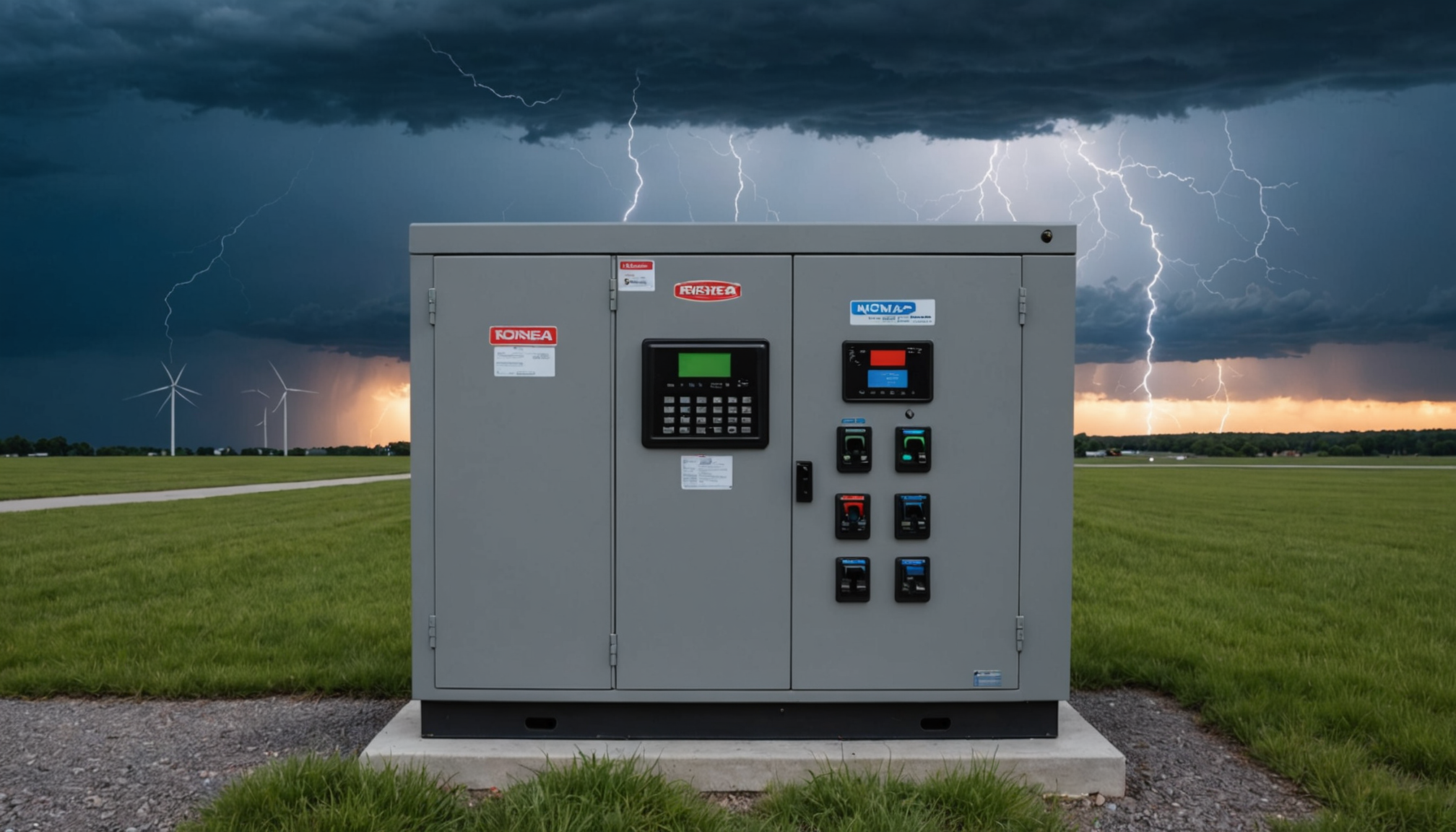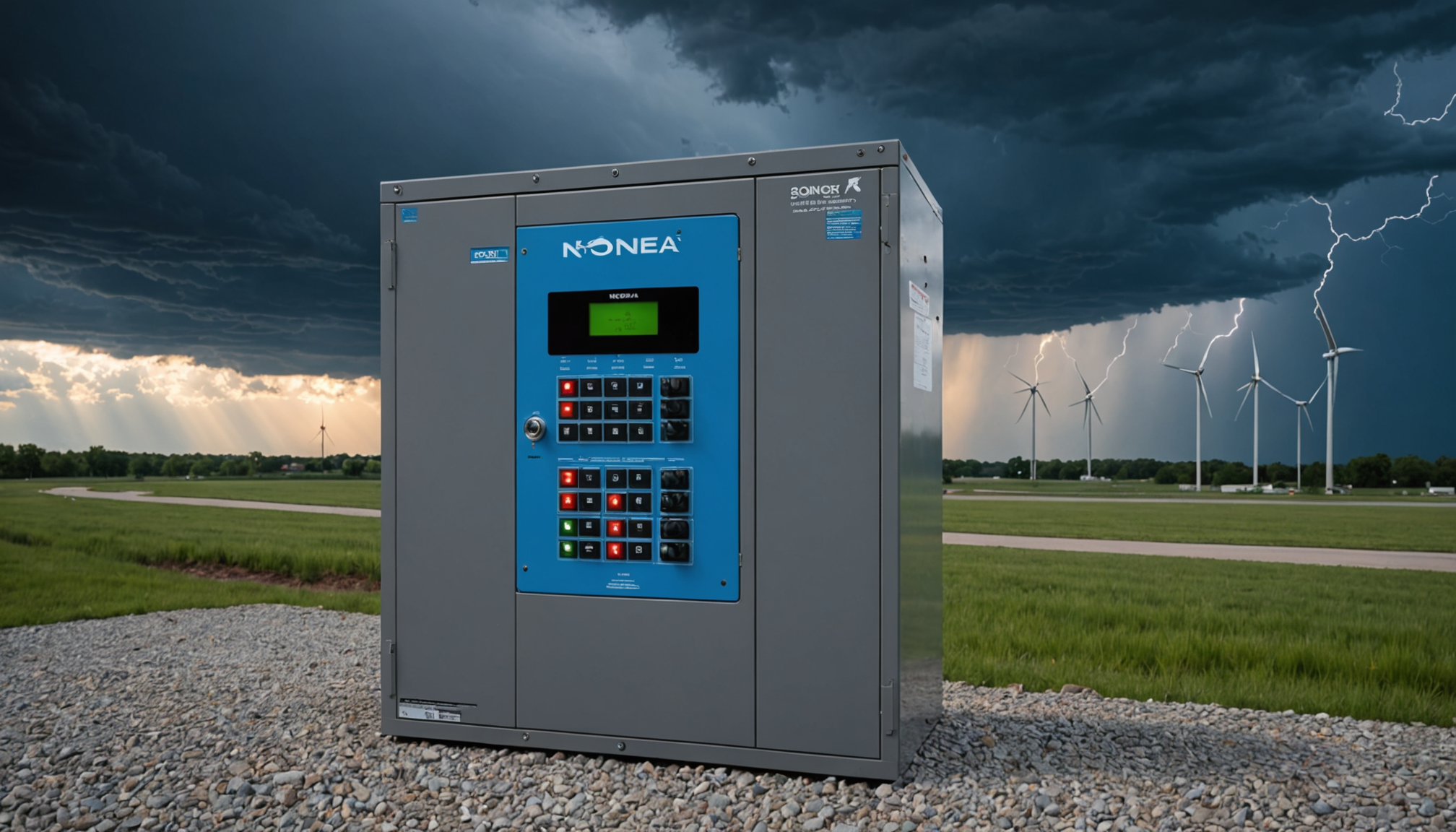In today’s unpredictable world, having a reliable power backup like a generator is not just a luxury but often a necessity, especially in areas prone to severe weather conditions such as Missouri. However, the efficiency and safety of a generator system largely depend on its integration with your home’s electrical system. This is where transfer switches come into play, a crucial component to ensuring seamless and safe power transitions during outages. Understanding transfer switches is not only vital for electrical safety but also for maintaining uninterrupted power supply in your household.
For homeowners in Missouri, where weather events can knock out power systems frequently, knowing the importance of correctly using transfer switches is essential. This knowledge not only aids in protecting your electrical equipment but also enhances the safety of your home. By effectively directing the power flow from your generator to the specific areas of your home that need it most, a transfer switch ensures that you can maintain everyday functions even during a power outage without overloading circuits or risking electrical fires.
Transfer switches serve as the bridge between your generator and your electrical system. They allow you to safely connect a generator to your home’s wiring without the hazards of back feeding, which can lead to severe consequences, including electrical fires or electrocution of utility workers. A professionally installed transfer switch enables you to manage and prioritize which circuits receive power based on necessity, helping to avoid overwhelming your generator’s capacity. According to the National Electrical Code (NEC), direct connection of a generator to the electrical wiring without a transfer switch is illegal, underscoring its importance for safe operation.
For those new to the concept, think of a transfer switch as a traffic director for your home’s power supply. Without it, you risk “traffic jams” or unintended power delivery that can cause circuits to trip or spark, potentially damaging home appliances or upgrading minor mishaps to major safety hazards. With correct installation and regular maintenance, transfer switches dramatically enhance both the efficacy and safety of your home’s backup power system.
When considering installing a transfer switch, consult with certified electrical contractors who understand local codes and the specific requirements of Missouri weather conditions. A small investment in expertise now can save you from costly repairs and potential safety breaches in the future. This focus on preventative safety measures fortifies your household against the unpredictable, providing peace of mind no matter the weather forecast.
Importance of generator maintenance
Regular maintenance of your generator is essential to ensure its reliability and longevity, especially in Missouri’s challenging weather conditions. Proper upkeep not only extends the lifespan of your generator but also ensures that it performs efficiently when you need it the most. With regular maintenance, potential issues can be identified and resolved before they escalate into costly repairs or dangerous situations, such as electrical failures or fires.
Neglecting maintenance can lead to fuel problems, battery failures, and even mechanical breakdowns, all of which could compromise the safety and functionality of your backup power system. For optimal performance, consider scheduling routine inspections, where professionals check crucial components like fuel lines, battery connections, and oil levels. This preventive approach reduces the risk of unexpected malfunctions and ensures that your generator is always ready to tackle power outages without a hitch.
Proper generator maintenance involves frequent testing to ensure everything is functioning as expected. Running your generator for short periods on a regular basis helps keep its components lubricated and prevents fuel from clogging the system. Also, testing the generator under different load conditions can help in identifying any stress points that need addressing before an actual emergency arises.
Apart from routine checks, keep an eye on any manufacturer recommendations specific to your generator model. These guidelines often provide valuable insights into maintenance schedules and specific parts that might require attention. Following these recommendations is crucial for maintaining the generator’s warranty and ensuring compliance with safety standards.
It is also essential to understand the environmental factors specific to Missouri that can impact generator performance. High humidity, temperature fluctuations, and seasonal storms necessitate a rigorous maintenance routine to prevent damage and maintain operational efficiency.
- Schedule regular maintenance checks with a certified professional to ensure all components are in top condition.
- Regularly test your generator to keep its system lubricated and to check its performance under different load conditions.
- Follow the manufacturer’s maintenance recommendations to preserve the warranty and adhere to safety standards.
- Be mindful of Missouri’s weather conditions, which may require more frequent maintenance to ensure optimal generator performance.
- Always ensure fuel levels are adequate and consider stabilizers to prevent fuel degradation over time.
Identifying carbon monoxide risks
One of the most critical safety concerns associated with generator use is the risk of carbon monoxide (CO) poisoning. Carbon monoxide is a colorless, odorless gas that can be produced by running generators, and it poses significant health risks if not managed properly. Understanding and identifying the potential sources and risks of CO is crucial for anyone operating a generator, especially under Missouri’s emergency preparedness scenarios where power outages are common.
A common mistake people make is operating generators too close to their homes or in enclosed spaces such as garages and basements. This can allow CO gas to accumulate quickly, leading to dangerous levels that can cause illness or even death. To avoid this, it is essential to always operate generators outdoors, at a safe distance from living spaces, and away from windows, doors, and vents that could allow the gas to enter your home.
Another frequent oversight is neglecting the installation of carbon monoxide detectors within the home. Even with proper generator placement, it’s crucial to have functioning CO detectors on every level of the house, particularly near sleeping areas. These devices act as vital early warning systems that can alert you to rising CO levels before they become hazardous. It’s just as important to regularly check the batteries and test the functionality of these detectors to ensure they are in working order.
Additionally, improperly maintained generators can increase the production of CO. Regular maintenance checks not only preserve the longevity and efficiency of your generator but also play a role in minimizing CO emissions. Simple tasks such as ensuring the exhaust system is clear of obstructions and repairing any engine leaks can significantly reduce CO production.
Lastly, it’s important to educate all household members on the risks associated with carbon monoxide and the symptoms of poisoning, such as headaches, dizziness, and nausea. Knowing these symptoms can prompt quick evacuation and emergency response, preventing severe health consequences. By staying informed and diligent, you can significantly reduce the risk of carbon monoxide exposure, ensuring that your reliance on a generator remains a safe and effective solution during power outages in Missouri.
Installing safe ventilation systems
Proper ventilation is paramount when it comes to safely operating a generator. In Missouri, unpredictable weather often leads to power outages, making backup generators a necessity. However, the key to ensuring safety rests in how these generators are used, particularly in relation to ventilation. A well-ventilated area prevents dangerous fumes, like carbon monoxide, from accumulating, thereby safeguarding the health and well-being of your household.
When installing a generator, position it outdoors and away from doors, windows, or any air intake systems that could allow fumes to enter your home. It’s crucial that generators are at least 20 feet away from occupied structures to minimize the risk of fumes drifting indoors. Utilizing an outdoor canopy or tent designed for generator use can also provide protection against the elements without compromising ventilation. Remember, operating a generator in an enclosed space is a severe safety hazard, even if the doors or windows are open.
To further mitigate risks, consider enhancing your home’s ventilation system, especially in areas near potential generator placement sites. Installing extra exhaust fans or vents can help disperse any lingering fumes and improve air circulation. This additional measure ensures that, even in adverse weather conditions, your generator won’t inadvertently introduce harmful gases into your living space.
Moreover, regular maintenance of your generator should include checks on its exhaust system. Leaks or blockages can severely impair a generator’s function and lead to increased emissions, heightening the risk of carbon monoxide exposure. Ensuring components like the exhaust pipe and muffler are in good working order is a proactive strategy for maintaining both efficiency and safety.
Finally, staying informed and proactive forms the backbone of generator safety. Regularly educate all household members about safe generator practices and the dangers of carbon monoxide poisoning. Keep a set of guidelines visible near your generator setup, and conduct drills to reinforce this knowledge. By employing these methods, you not only safeguard your home from potential hazards but also foster confidence in dealing with emergency scenarios.
By taking these preventative steps, you create a safer environment for your family, protecting them against the invisible threats posed by improper generator use. Embrace vigilance, invest in the right tools and practices, and empower your household to handle power outages with assurance and calm.
Best practices for emergency preparedness
Below is the FAQ section that follows the previous detailed guide on generator safety in Missouri.
“`html
- What is the safest way to operate a generator at home?
- The safest way to operate a generator is to place it outside, away from doors, windows, and vents, to prevent carbon monoxide poisoning. Make sure to maintain a distance of at least 20 feet from your home and never operate the generator in an enclosed space.
- Why do I need a transfer switch for my generator?
- A transfer switch is essential for safely connecting your generator to your home’s electrical system. It ensures that power flows correctly to necessary circuits without back feeding, which can prevent electrical fires and protect utility workers from electrocution.
- How can I prevent carbon monoxide buildup when using a generator?
- To prevent carbon monoxide buildup, always use the generator outdoors and ensure proper ventilation. Installing CO detectors in your home is also crucial as they provide early warnings of rising CO levels, safeguarding your family’s health.
- How often should I perform maintenance on my generator?
- Regular maintenance should be scheduled at least annually, but more frequent checks may be necessary based on usage and specific manufacturer recommendations. Regular inspections ensure that components like fuel lines and batteries are in good working condition, preventing failures during an emergency.
- What should I do if I suspect carbon monoxide poisoning?
- If you suspect carbon monoxide poisoning, including symptoms like headaches, dizziness, or nausea, evacuate the area immediately and seek fresh air. Contact emergency services right away for assistance and medical evaluation.
“`

